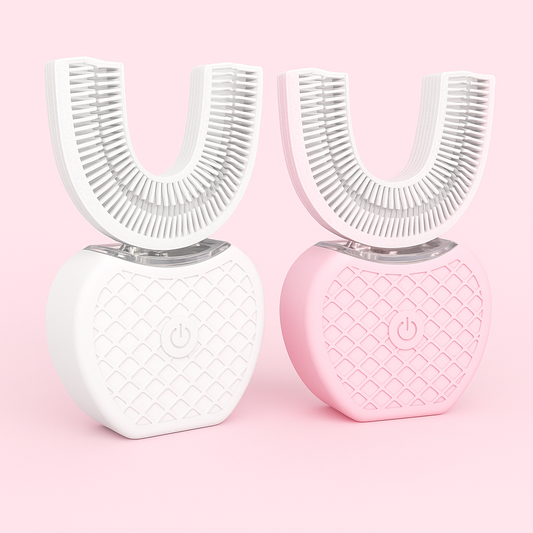Introduction: A New Direction for Fluoride-Free Whitening
Consumers increasingly seek alternatives to traditional fluoride toothpastes while still wanting visible whitening and strong enamel. Formulators are responding by combining multifunctional ingredients. Two that stand out are niacinamide (vitamin B3) and xylitol. Together in a thoughtfully designed fluoride-free toothpaste they can reduce sensitivity during whitening, support soft-tissue health, and help manage bacterial risk.
This long-form dentist-to-patient guide explains the science, practical use, safety considerations, product-selection tips, and SEO-friendly search phrases to help you find or recommend the right products — including examples of keywords like good whitening toothpaste, toothpaste without fluoride, toothpaste with xylitol, and niacinamide toothpaste.
Understanding the Ingredients: Niacinamide and Xylitol
- Niacinamide: A bioavailable form of vitamin B3 widely used in dermatology for its anti-inflammatory and barrier-support properties. In oral care, niacinamide is being used to soothe mucosa and reduce gingival inflammation, which can improve tolerance of whitening protocols and daily brushing.
- Xylitol: A sugar alcohol naturally present in many fruits and vegetables. Xylitol is non-fermentable by cariogenic bacteria, reduces bacterial adhesion and acid production, and stimulates salivary flow — all beneficial when fluoride is absent.
How They Work Mechanistically
Niacinamide and xylitol act on different but complementary targets:
- Niacinamide modulates inflammatory pathways and supports cellular repair of the gingival epithelium, which can reduce brushing sensitivity, gingival bleeding, and irritation associated with chemical or abrasive whitening.
- Xylitol interrupts the metabolism of Streptococcus mutans and other acid-producing bacteria because they cannot ferment xylitol into acid. Regular exposure lowers cariogenic bacterial counts and fosters a less cariogenic oral environment.
Why This Pairing Makes Sense in Fluoride-Free Formulas
Fluoride is well-established for remineralizing enamel and reducing caries. When patients choose or require toothpaste without fluoride, other strategies are needed to protect enamel and oral tissues. A niacinamide + xylitol pairing provides:
- Improved soft-tissue health and reduced sensitivity (niacinamide), which helps patients tolerate whitening.
- Bacterial modulation and salivary stimulation (xylitol), which reduce acid exposure and support natural remineralization processes.
- A patient-friendly experience: better taste and less irritation encourage consistent brushing — a critical factor for both whitening maintenance and health teeth.
Whitening Mechanisms and Where These Ingredients Fit
Understanding whitening helps set realistic expectations:
- Abrasive whitening removes surface stains with silica or other gentle abrasives. Abrasivity is measured by RDA (Relative Dentin Abrasivity); low-to-medium RDA is preferred to prevent enamel wear.
- Chemical whitening uses peroxides (hydrogen peroxide or carbamide peroxide) to oxidize deeper stains. These are effective but can cause sensitivity.
- Optical or pigment-based systems deposit temporary film or blue pigments to create a whiter appearance.
Niacinamide is not a bleaching agent, but it reduces sensitivity and inflammation that often accompany chemical whitening. Xylitol helps protect the enamel surface indirectly by reducing acid attacks and improving saliva-mediated buffering.
Scientific Evidence: What the Literature Supports
Key, conservative takeaways from clinical and laboratory research:
- Multiple clinical studies support xylitol's role in reducing cariogenic bacterial levels and decreasing caries risk with regular exposure.
- Research into niacinamide's oral-care benefits is growing; existing work points to anti-inflammatory and mucosal-support roles rather than direct remineralization.
- Fluoride remains the gold standard for direct enamel remineralization. In fluoride-free formulations, look for complementary mineral technologies (nano-hydroxyapatite, calcium phosphate complexes, ACP/CPP-ACP) that provide direct mineral support.
In short, niacinamide and xylitol provide meaningful, evidence-aligned benefits, particularly for patient comfort and bacterial management, but they are best combined with mineral-replenishing systems to maximize enamel protection without fluoride.
Enamel, Saliva, and Remineralization: A Primer
Understanding enamel dynamics helps explain why ingredient choice matters:
- Enamel is a highly mineralized tissue made primarily of hydroxyapatite crystals. It cannot regenerate like soft tissue, but minerals can be redeposited through remineralization.
- Saliva is the mouth's natural defense: it buffers acids, supplies calcium and phosphate, and supports remineralization. Xylitol stimulates salivary flow and improves buffer capacity.
- In the absence of fluoride, delivering bioavailable calcium and phosphate or using nano-hydroxyapatite can support remineralization when combined with bacterial control and good hygiene.
Practical Product Selection: What to Look For on the Label
When choosing a fluoride-free whitening toothpaste that includes niacinamide and xylitol, consider this checklist:
- Clear listing of niacinamide and xylitol in the ingredients list or prominent marketing copy.
- Evidence of a low-to-medium RDA value or wording that indicates gentle abrasivity; avoid products that advertise aggressive abrasive whitening without clinical context.
- Presence of remineralizing minerals or systems (nano-hydroxyapatite, calcium phosphate, ACP) if you are avoiding fluoride.
- Third-party testing, clinical studies, dentist endorsements, or consumer-safety certifications.
- Appropriate flavoring and sweeteners; xylitol helps provide sweetness without feeding bacteria.
- Age recommendations or pediatric formulations if you're shopping for children.
How to Use Niacinamide + Xylitol Toothpaste for Best Results
Routine and technique matter as much as ingredients:
- Brush twice daily for two minutes with a pea-sized amount. Use a soft-bristled brush and gentle technique to minimize abrasion.
- If you are combining toothpaste use with at-home bleaching agents, apply the niacinamide + xylitol toothpaste outside of immediate post-whitening windows as directed by your dentist; niacinamide may reduce sensitivity during and after peroxide use.
- Complement with fluoride-free remineralizing pastes or rinses if you avoid fluoride — look for calcium/phosphate systems or nano-hydroxyapatite.
- Keep regular dental checkups to monitor enamel health and caries risk, especially if you use fluoride-free products long-term.
Safety, Contraindications, and Special Populations
- Children: Supervise brushing and use age-appropriate formulations. Toothpastes are not food; avoid ingestion in large amounts. Discuss fluoride needs with a pediatric dentist.
- Pregnancy and breastfeeding: Ingredients like niacinamide and xylitol are generally considered low-risk in topical oral products, but consult a healthcare provider for personalized advice.
- Allergies and sensitivities: True allergy to niacinamide is rare. Xylitol intolerance is mostly gastrointestinal if ingested in large amounts; topical use in toothpaste is usually well-tolerated.
- Pets: Xylitol is toxic to dogs. Store toothpaste securely and avoid feeding human products to pets.
Common Side Effects and How to Address Them
- Temporary increased salivation — typically harmless and often beneficial.
- Mild GI upset from swallowed xylitol in sensitive individuals — avoid swallowing toothpaste and supervise children.
- Rare mucosal irritation — discontinue use if persistent irritation occurs and consult a dentist.
Clinical Scenarios and Dentist Recommendations
How dentists might use this information in practice:
- Patients with sensitivity during peroxide whitening: recommend a niacinamide-containing toothpaste to reduce discomfort and improve compliance.
- Patients avoiding fluoride for personal or medical reasons: choose a toothpaste that includes xylitol and a mineral delivery system (nano-hydroxyapatite or calcium phosphate) to mitigate caries risk.
- Orthodontic patients or those with restorations: favor low-abrasivity formulations with proven bacterial-control ingredients to protect enamel and margins.
How to Read Claims: Marketing vs. Mechanism
Be skeptical of absolute or miraculous claims. When evaluating products:
- Look for specific ingredient lists rather than vague marketing phrases.
- Check whether claims are supported by independent clinical data or published studies.
- Note the presence of supportive minerals for remineralization if fluoride is absent.
DIY and Natural Trends: What to Avoid
Many DIY or heavily natural approaches emphasize abrasive powders or high-acid rinses that can harm enamel. Prefer clinically formulated products that balance stain removal with enamel preservation. Niacinamide and xylitol are useful within a formulation designed by experienced cosmetic or therapeutic chemists.
SEO and Content Tips for Brands and Dentists
If you're publishing content or optimizing product pages, keep these best practices in mind:
- Target long-tail keywords and natural language queries: examples include toothpaste without fluoride that whitens, niacinamide toothpaste for sensitivity, toothpaste with xylitol for cavities.
- Use H2 headings with clear keywords (for example, niacinamide toothpaste, toothpaste with xylitol, good whitening toothpaste) to match search intent and improve crawlability.
- Provide practical, evidence-based answers and FAQs; searchers want trustworthy, actionable guidance.
- Include sponsored product links with transparency. If you feature a brand partner, use rel='sponsored' and provide an honest disclosure.
Expanded FAQ
- Will this toothpaste whiten intrinsic stains? Intrinsic stains (from tetracycline, fluorosis, aging) respond best to professional bleaching or restorations. Fluoride-free niacinamide + xylitol toothpaste helps with surface stains and comfort, but deep intrinsic discoloration typically requires other treatments.
- How long until I see benefits? Bacterial shifts from xylitol can appear over weeks to months with consistent use. Sensitivity reduction from niacinamide may be noticed sooner, but full benefits are typically seen with regular daily use over weeks.
- Can I use this with my fluoride rinse? Combining fluoride rinses with a fluoride-free toothpaste is a patient-specific decision; consult your dentist. The ingredients themselves are generally compatible, but the overall prevention strategy should be tailored to caries risk.
Product Selection Checklist (Quick Reference)
- Niacinamide present and clearly listed.
- Xylitol listed in sufficient prominence (often near sweeteners).
- Low-to-medium abrasivity (RDA preference) or wording indicating gentle whitening.
- Remineralizing minerals included if you avoid fluoride (nano-hydroxyapatite, calcium phosphate, ACP).
- Clinical or dental endorsements; clear usage directions and age guidance.
- Positive user reviews on taste and sensitivity outcomes.
Real-World Examples: How Patients Benefit
Case vignettes dentists commonly see:
- A patient sensitive to at-home peroxide kits reports reduced sensitivity after switching to a niacinamide-containing toothpaste and completes whitening with less downtime.
- A parent seeking toothpaste without fluoride for a young child uses a xylitol-containing pediatric paste under supervision and combines it with topical mineral treatments recommended by their dentist to mitigate caries risk.
- An adult with mild extrinsic staining achieves perceptible whitening using a low-abrasivity, xylitol-sweetened toothpaste with regular polishing and professional maintenance, while experiencing less gingival irritation due to niacinamide.
Where to Find Trusted Fluoride-Free Options
Look for established oral-care brands that publish ingredient transparency and, where possible, clinical data. If you prefer to shop directly, consider product lines that market specifically as fluoride-free and include supportive ingredients like niacinamide and xylitol. For example, if you are searching for a good whitening toothpaste or the best toothpaste for whiter teeth that is also a toothpaste without fluoride and contains toothpaste with xylitol, Havana Body offers options to explore. Visit Havana Body to review their fluoride-free whitening ranges and ingredient details: good whitening toothpaste, toothpaste without fluoride, and toothpaste with xylitol.
Final Recommendations for Dentists
- Assess caries risk before endorsing a fluoride-free regimen; patients at higher risk may still need fluoride in some form.
- When patients request fluoride-free whitening, recommend products that combine xylitol with a validated mineral system and consider adding niacinamide for sensitivity control.
- Monitor enamel health at recall visits and adjust oral-care strategies based on objective findings.
- Educate patients on realistic expectations for whitening and the importance of daily habits.
Conclusion: Balanced, Patient-Centered Whitening and Enamel Care
Niacinamide and xylitol are a compelling combination for fluoride-free toothpaste formulations that aim to deliver gentler whitening and support stronger enamel indirectly. Niacinamide helps reduce sensitivity and improve soft-tissue tolerance, while xylitol reduces cariogenic bacterial activity and supports salivary defenses. Together, when paired with remineralizing minerals and a low-abrasivity approach, they form a practical alternative for patients seeking toothpaste that whitens teeth without fluoride.
If you're ready to explore thoughtfully formulated fluoride-free options that prioritize whitening, sensitivity reduction, and enamel support, consider browsing established product ranges. For those searching for toothpaste whitening best options, toothpaste that whitens teeth without fluoride, or the best toothpaste for whiter teeth with supportive ingredients, check out Havana Body's fluoride-free whitening line: Visit Havana Body to learn more and shop products designed for safer whitening and stronger enamel.
Always consult your dentist before making major changes to your oral-care routine, especially if you have a history of caries, restorations, or sensitivity. With the right product choices and professional guidance, you can balance cosmetic goals with long-term oral health.


